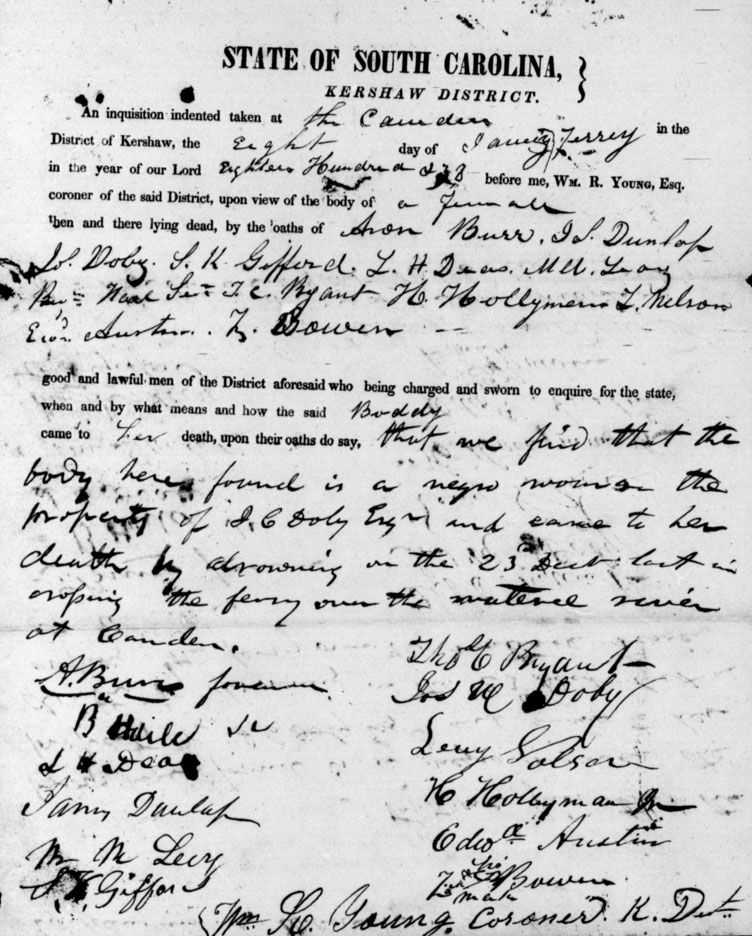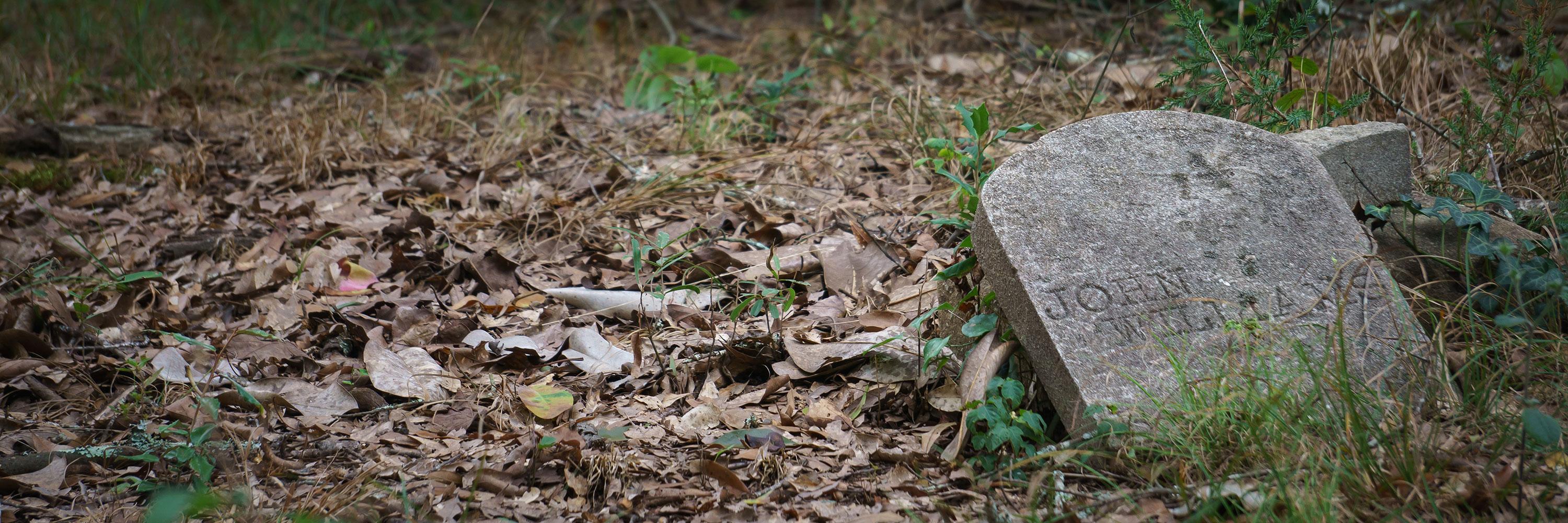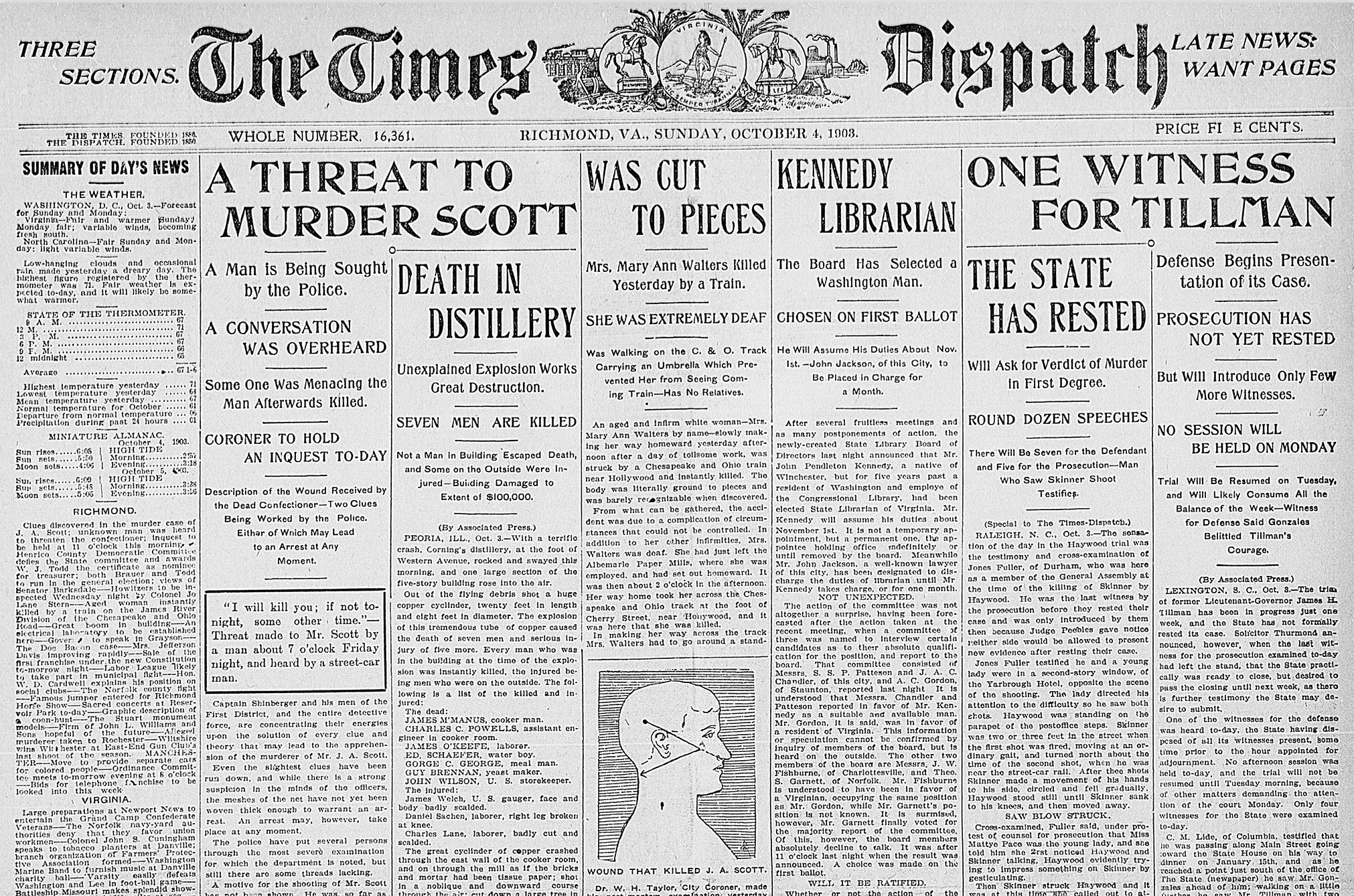Meet the Coroners
Coroners were a part of the South Carolina legal system from the beginning, but the office was not formalized until 1706, when the colonial legislature determined to “fully direct ... the Coroners of this Province ... in the due administration of their offices.” The resulting “Act Relating Unto the Office and Duty of a Coroner, and For Settling and Ascertaining the Fees of the Same” established protocols for death investigation that would carry into the twentieth century. Appointed by the legislature for an indefinite term, the coroner’s primary charge was “to take inquests of felonies and other violent and casual deaths committed or happening within his precincts.” The moment he learned of a suspicious or sudden death in his district (later his county), he was “forthwith” to write constables in the local area and direct them to round up a fourteen-member jury who were to meet him at the body’s location at a specified day and time. Once arrived, the coroner administered an oath compelling the jury to reach a verdict as to “how, where, at what time, by what means, with what instrument, and in what manner, the party was killed or came to his death.” To ensure that all available evidence had been heard, the coroner was empowered to compel witnesses to attend the inquest and “declare their knowledge concerning the matter in question.” If they failed to show, they would face a fine. If the body had been moved, the coroner was to find out who moved it and why. If the body had been buried, the coroner was empowered to dig it up. Colonial instructions were so specific that if the probable cause of death was snake-bite, the coroner was to make sure that there were bite marks.
The law was also specific about compensation, basing the coroner’s fee on the distance between the inquest and his residence. If the coroner had to travel fewer than ten miles, he was entitled to two pounds. If he had to travel more than thirty miles, he was entitled to four pounds. Such sums sound paltry but would be the equivalent of hundreds of dollars today.
The first substantial revision to the 1706 act did not come until 1839. In many ways a restatement of the colonial statute, “An Act Concerning the Office, Duties and Liabilities of the Coroner” (1839) included some new limits on the coroner’s office while at the same time expanding its powers. Appointed by joint resolution of the state Senate and House of Representatives, coroners were now subject to term limits of four years, and they were required to lodge a surety bond of five thousand dollars before they could take office. Such bonds were expected of most public officials and were designed to protect taxpayers from embezzlement or malfeasance. In practical effect, the bonds ensured that coroners would be men of relative affluence who could be expected to make good on a $5000 bond.
With these exceptions, the 1839 act was mostly a clarification and expansion of the coroner’s powers. For the first time, he was explicitly given an office for his own use at the county court house. Any constable or sheriff who did not comply with a coroner’s order to impanel a jury would be fined twenty dollars. Any juror who failed to show at the inquest would be fined twenty dollars. Any witness who failed to appear or refused to testify at an inquest would be fined twenty dollars and would be taken to jail. Most important, “if the finding of inquest be wilful [sic] killing by the hands or means of another,” the coroner was empowered to direct any sheriff or local constable to have the suspect arrested and imprisoned. To ensure that he would have access to such prisoners, the act specified that “the Sheriff of each District shall set apart in the jail room for the confinement of such persons as may be exclusively in custody of the Coroner, of which the Coroner shall have exclusive control.”

By 1839, then, the coroner had become a key figure not merely in the state’s system of death investigation but in law enforcement and the judicial process more broadly. His functions were not merely clerical—the convening of an inquest and the filing of a result—but judicial— levying fines, compelling witnesses, making arrests, and building the state’s initial case against the accused. He functioned, in a sense, as a sheriff of the dead, with primary control over potential criminal cases in which, by accident or malice aforethought, someone had been killed.
With this expansion of powers came an expansion of compensation. Coroners were to be paid not only for every inquisition taken but for every mile traveled, warrant issued, person arrested, or body disinterred. More important for the purposes of CSI:D, coroners were encouraged to keep extensive and duplicative records. As before, all original inquest documents, including all evidence gathered from witnesses, were to be filed with the Clerk of the Court of Common Pleas. But coroners were also required to transcribe every word of those documents into a “book to be called The Coroner’s Book of Inquisitions,” which would remain in the coroner’s office to be transferred to the next coroner at the start of his term. To compensate coroners for all of this transcription, they were to be paid “twelve cents per copy sheet of ninety words,” thus incentivizing them to capture additional details (and additional revenue). From the historian’s perspective this requirement is also important because it gives us two chances that the records would survive and, in cases where both survived, to check them against each other for completeness. The coroner’s office would receive additional statutory tweaks after 1839, but this one act largely captured the design and function of the office as it appears in CSI:D, with the only big change coming in 1868 when coroner became an elective office state wide.
The 1839 act described the coroner’s office in idealized form, however. In practice, many inquests were presided over not by the district’s official coroner but by justices of the quorum, justices of the peace, or other local magistrates acting as coroners. Usually this was a simple matter of convenience—cases where the official coroner had not been named by the legislature or was away from the district or simply did not want to travel to some particular location. There is some evidence, however, that occasionally local magistrates took these on duties (and the related fees) without official sanction. In 1861, for instance, the state legislature mandated that anyone presenting an invoice for an inquest would have to include an affidavit verifying that the appointed coroner had been sick, absent, or otherwise unable to attend to his duties. This law was in keeping with an earlier 1855 injunction on coroners to limit their use of physicians as expert (and compensated) witnesses to those cases in which such testimony was crucial to establishing a cause of death. Such laws were clearly meant to curb costs, and one can imagine that, like any public office, the coroner system had become prone to abuse—with collusions between physicians and magistrates hoping to line their pockets.
The other professionals who lived, to a small degree, off the proceeds of the coroner’s office were reporters. Much has been written about the rise of the penny dreadfuls in the urban centers of the north, but murder and mayhem had been generating column inches in newspapers across the country from colonial times. What changed over the course of the nineteenth century was the breadth, depth, and nature of the coverage. As notions of universal depravity yielded to notions of human perfectibility, murder and murderers became more exoticized. In colonial times, the lessons to be learned from the existence of murderers was that Satan was ever lying in wait, tempting all by small degrees down the paths of sin that led inevitably from jealousy and covetousness to homicide. Coverage in the press, historian Karen Halttunen has suggested, focused not on the details of the murderous deed but on the spiritual condition of the killer and how all might learn from his or her mistakes. In the more gothic imagination of the nineteenth century, by contrast, the lurid details were laid out in a pornography of violence that at once titillated audiences and repelled them; the reader was not encouraged to identify with the killer as a common sinner but to see an inexplicable monster morally alien to the community. The result was doubly satisfying to news consumers, who could at once revel in the violence even as they were congratulated for being morally superior to it.
No direct evidence places a reporter at any of the inquests in the CSI:D sample, but subsequent coverage makes it clear that they were privy to all details, including witness testimony, even in criminal cases. Louis Charles Boisliniere, who served as St. Louis County coroner from 1858 to 1861, went so far as to keep a separate diary, replete with details and inscribed “Notes for Reporters.” Nothing, apparently, was ‘sealed’ about an inquest and, perhaps more than trials, inquests were a staple of Southern reportage. Fully ninety percent of the front page of the Richmond Dispatch for October 4, 1903, for instance, was devoted to Death, demonstrating just how far newspapers had moved from their party-organ predecessors to their deep dependency on crime and criminality for their content. The body count in this one sheet is appalling: Readers learn of the murder and post-mortem of J.A. Scott; the death of Mrs. Mary Ann Walters, “Cut To Pieces” by a train; the latest testimony in the murder trial of former Lieutenant-Governor James H. Tillman; 4) the mysterious distillery explosion that killed seven; the “old lady” who fell head-first into a spring and is now “beyond the reach of human aid”; the apparent murder of a private detective who had been shadowing an actress ... on and on stretches a smorgasbord of schadenfreude sufficient to slake the appetite of the greatest gourmand. [1]
If you really wanted a front-row seat in this theater of Death, however, you would have to serve on a coroner’s jury.
NEXT: Meet the Jurors
Inquests, 1858-1861, Record Book of Louis Charles Boisliniere, St. Louis County (Mo.) Coroners Records, Missouri Historical Society Archives
Coroners
| ID | First Name |
Middle Name(s) |
Last Name | Notes | |
|---|---|---|---|---|---|
| 9166 | J. | [?] | Gladney[?] | ||
| 9138 | William | Z.[?] | Listner | ||
| 9152 | W. | Z. | Leitner[?] | ||
| 9443 | J. | Wistar | Stewart | ||
| 9229 | J. | Ward | Motte | ||
| 9542 | George | W. H. | Legg | ||
| 9312 | George | W. | Nixon | ||
| 9279 | J. | W. | Johnson | ||
| 9619 | Robert | W. | Shand | ||
| 9132 | C. | W. | Faucilte[?] | ||
| 9282 | N. | W. | Brooker | ||
| 9393 | Joseph | W. | Keys | ||
| 9071 | J. | W. | Ousley | ||
| 9476 | J. | W. | De Pass | ||
| 9352 | W. | W. | Brooker | ||
| 9089 | Daniel | W. | Oliver | ||
| 9534 | J. | W. | Martin | ||
| 9478 | R. | W. | Sutton | ||
| 9586 | J. | W. | Stribling | ||
| 9091 | J. | W. | Evans | ||
| 9092 | S. | W. | Ruff | ||
| 9448 | J. | W. | Sullivan | ||
| 9011 | G. | W. | Brewer | ||
| 9111 | J. | W. | Coleman | ||
| 9292 | H. | W. | Dobey |




